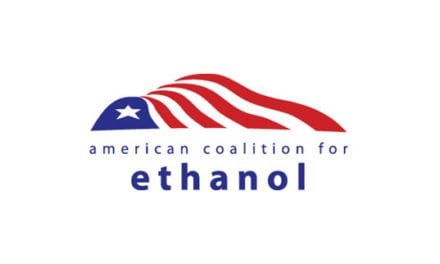Oil Price Direction Signals are Mixed
- Oil supply abundance ignored by market
- Autumn refinery turnarounds could increase crude oil supply
- DUCs, (wells, drilled but uncompleted) could cap price rally
- Natural gas tests resistance at $2.70
Sincerely, Alan Levine Chairman, Powerhouse
The Matrix
Oil markets continue to humble their traders. Market fundamentals and trading technicals have diverged.
The petroleum press is replete with stories of record production in Saudi Arabia, disappointing demand in Europe and continuing growth in stocks. In the United States, total stocks rose over a million barrels during the most recent report week despite a decline of 2.5 million barrels in crude oil supplies.
Petroleum fundamentals remain bearish. U.S. refineries increased their operating rate and crude oil inputs have been hugging the top of the five-year range. The decline in U.S. crude oil inventories that fell seasonally from April through July appear to have found their footing. And as we approach autumn refinery turnarounds, we anticipate additions to crude oil stocks becoming the norm.
The IEA’s projection of a one million barrels daily third quarter decline in crude oil stocks has been met with skepticism in the analytical community. Refinery repairs and turnaround should add to crude oil stocks, not reduce them.
The overwhelmingly bearish fundamental situation has not been enough to stem the advance in oil prices. Market prices move for their own reasons and oil markets have been moving higher. On August 3rd, spot futures WTI crude oil bottomed at $40.83. In the succeeding twelve sessions, prices gained nearly twenty per cent. Resistance lies at $50.23.
If crude reaches resistance, trade talk will inevitable turn to the situation in North America where wells, drilled but uncompleted (DUCs,) may be called into production. Even in May, the Energy Information Administration reported higher production than previously thought. This suggests that prices in May were sufficient to allow completions at remunerative rates. If prices remain at today’s general level, the outlook for North American output may improve and tend to cap further advances in price.

Supply/Demand Balances
Supply/demand data in the United States for the week ending August 12, 2016 were released by the Energy Information Administration.
Total commercial stocks of petroleum increased 1.3 million net barrels during the week ending August 12, 2016.
Builds were reported in stocks of distillates, residual fuel oil, propane, and other oils. A draw was reported in stocks of gasoline. Fuel ethanol and K-jet fuel stocks were unchanged from the previous report week.
Commercial Crude oil supplies in the United States decreased to 521.1 million barrels, a draw of 2.5 million barrels.
Crude oil supplies decreased in four of the five PAD Districts. PAD District 1 (East Coast) crude oil stocks fell 0.7 million barrels, PADD 2 (Midwest) stocks declined 0.1 million barrels, PADD 3 (Gulf Coast) stocks decreased 0.2 million barrels, and PADD 5 (West Coast) stocks declined 2.3 million barrels. Crude oil stocks in PADD 4 (Rockies) increased 0.8 million barrels.
Cushing, Oklahoma inventories decreased 0.8 million barrels to 64.5 million barrels.
Domestic crude oil production increased 152,000 barrels daily to 8.597 million barrels per day.
Crude oil imports averaged 8.193 million barrels per day, a daily decrease of 211,000 barrels.
Refineries used 93.5 per cent of capacity, an increase of 1.3 percentage points from the previous report week.
Crude oil inputs to refineries increased 268,000 barrels daily; there were 16.865 million barrels per day of crude oil run to facilities. Gross inputs, which include blending stocks, increased 244,000 barrels daily to 17.127 million barrels daily.
Total petroleum product inventories saw an increase of 3.8 million barrels from the previous report week.
Gasoline stocks decreased 2.7 million barrels; total stocks are 232.7 million barrels.
Demand for gasoline decreased 7,000 barrels per day to 9.762 million barrels daily.
Total product demand decreased 76,000 barrels daily to 20.625 million barrels per day.
Distillate fuel oil supply increased 1.9 million barrels; total stocks are 153.1 million barrels. National distillate demand was reported at 3.488 million barrels per day during the report week. This was a weekly decrease of 449,000 barrels daily.
Propane stocks increased 1.8 million barrels to 93.7 million barrels. Current demand is estimated at 0.955 million barrels per day, an increase of 101,000 barrels daily from the previous report week.
Natural Gas
According to the Energy Information Administration:
Injections to [natural gas] storage continue at slower-than-normal rate. Net injections into storage totaled 22 Bcf, compared with the five-year (2011-15) average net injections of 57 Bcf and last year’s net injections of 56 Bcf during the same week. Working gas stocks total 3,339 Bcf, 405 Bcf above the five-year average and 327 Bcf above last year at this time.
This week marks the 15th consecutive week that the gap of working gas stocks compared with the five-year average declined. When the refill season began on April 1, working gas stocks were 874 Bcf above the five-year average.
The injections were less than expected by market observers. This was bullish but not enough so to break important resistance at $2.70. Technical analysts point out that a break of resistance could yield a rally to $3.00.
If $2.70 holds, however, another leg down is possible. An objective of $2.40 to $2.50 would then be in place.
Futures trading involves significant risk and is not suitable for everyone. Transactions in securities futures, commodity and index futures and options on future markets carry a high degree of risk. The amount of initial margin is small relative to the value of the futures contract, meaning that transactions are heavily “leveraged”. A relatively small market movement will have a proportionately larger impact on the funds you have deposited or will have to deposit: this may work against you as well as for you. You may sustain a total loss of initial margin funds and any additional funds deposited with the clearing firm to maintain your position. If the market moves against your position or margin levels are increased, you may be called upon to pay substantial additional funds on short notice to maintain your position. If you fail to comply with a request for additional funds within the time prescribed, your position may be liquidated at a loss and you will be liable for any resulting deficit. Past performance may not be indicative of future results. This is not an offer to invest in any investment program.
Powerhouse is a registered affiliate of Coquest, Inc.
Was this helpful? We’d like your feedback.
Please respond to [email protected]
or call: 202 333-5380
Copyright © 2016 Powerhouse, All rights reserved.












